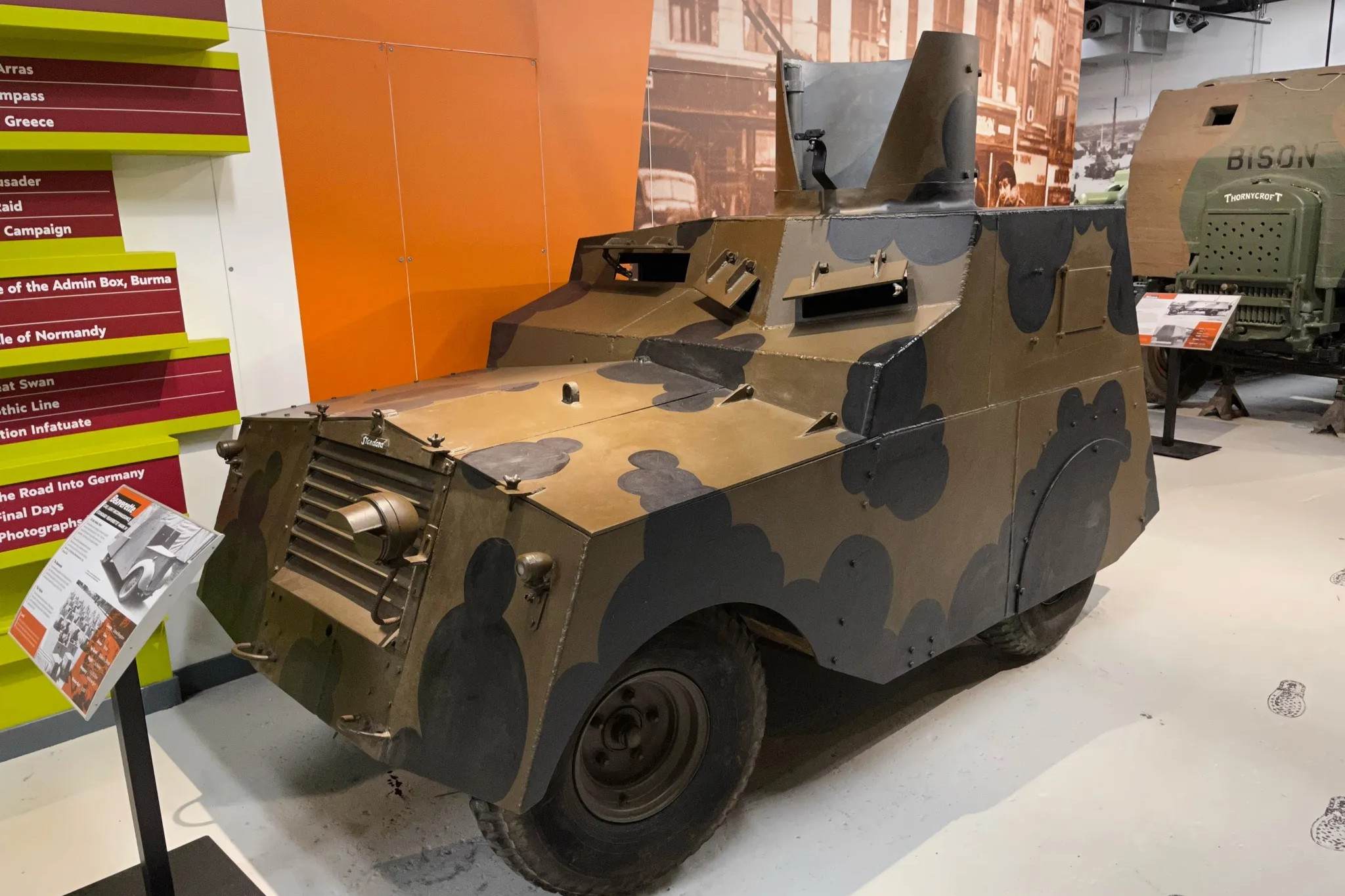
Beaverette—a name that might sound cute, but this vehicle played a serious role during World War II. Ever wondered what made this armored car so special? Beaverette was a British improvised armored car, built to defend against potential invasions. It was named after Lord Beaverbrook, the Minister of Aircraft Production, who pushed for its creation. These vehicles were made quickly using available materials, often repurposing car chassis and adding armor plating. They weren't the most advanced or heavily armed, but they were crucial for Britain's defense strategy. Ready to learn more about this fascinating piece of history? Let's dive into 25 facts about the Beaverette that highlight its importance and unique characteristics.
What is a Beaverette?
The Beaverette was a British armored car used during World War II. It was designed for home defense and built using civilian car chassis. Here are some fascinating facts about this unique vehicle.
-
The Beaverette was named after Lord Beaverbrook, the Minister of Aircraft Production during World War II.
-
It was built using the chassis of civilian cars, primarily the Standard 14.
-
The vehicle was designed quickly to meet the urgent need for armored cars in Britain during the early years of the war.
-
The Beaverette had a simple and rugged design, making it easy to produce and maintain.
-
It was primarily used by the Home Guard and other auxiliary units for defense against potential invasions.
Design and Features
The Beaverette's design was straightforward but effective. It had several notable features that made it suitable for its intended role.
-
The body was made from steel plates bolted onto the car chassis, providing basic protection against small arms fire.
-
The vehicle had an open-top design, which allowed for better visibility but left the crew exposed to the elements.
-
It was armed with a Bren light machine gun or a Boys anti-tank rifle, giving it some offensive capability.
-
The Beaverette had a crew of two to three men, including a driver and one or two gunners.
-
Despite its simple design, the vehicle was relatively heavy, which affected its speed and maneuverability.
Production and Variants
Several versions of the Beaverette were produced during the war, each with slight modifications to improve performance and usability.
-
The Mark I was the initial version, featuring a basic open-top design and minimal armor.
-
The Mark II introduced a fully enclosed roof, providing better protection for the crew.
-
The Mark III had improved armor and a more powerful engine, enhancing its performance.
-
The Mark IV was the final version, featuring a redesigned body and additional armor plating.
-
Over 2,800 Beaverettes were produced during the war, making it one of the most common British armored cars of the period.
Operational Use
The Beaverette saw action in various roles throughout the war, primarily within the United Kingdom.
-
It was used extensively by the Home Guard for patrolling and guarding key installations.
-
The vehicle was also employed by the Royal Air Force for airfield defense.
-
Some Beaverettes were used by the British Army for training purposes, helping to prepare troops for combat.
-
Despite its limitations, the Beaverette provided a valuable stopgap solution during the early years of the war.
-
The vehicle's simplicity and ease of production allowed it to be quickly deployed in large numbers.
Legacy and Historical Significance
The Beaverette may not have been the most advanced armored car of its time, but it played a crucial role in Britain's home defense strategy.
-
It demonstrated the ability to rapidly adapt civilian technology for military use in times of crisis.
-
The vehicle's production helped to boost morale on the home front, showing that Britain was prepared to defend itself.
-
Many surviving Beaverettes are now preserved in museums and private collections, serving as a reminder of the ingenuity and resourcefulness of the wartime generation.
-
The Beaverette's design influenced the development of later armored cars, contributing to the evolution of military vehicle technology.
-
Although it was eventually replaced by more advanced vehicles, the Beaverette remains an important part of British military history.
Final Thoughts on Beaverettes
Beaverettes, those quirky armored cars from WWII, sure pack a punch in history. They weren't just about brute force; they were a testament to ingenuity during tough times. Built from salvaged materials, these vehicles showed how resourcefulness could turn the tide. Their role in protecting airfields and key locations was crucial. Though not the most glamorous, they were vital in their own right.
Their unique design, with a mix of civilian car parts and military armor, made them stand out. They weren't the fastest or the most powerful, but they got the job done. Today, they remind us of a time when creativity and determination were key. So next time you think about WWII vehicles, give a nod to the Beaverette. They might not be as famous as tanks or planes, but their story is just as compelling.
Was this page helpful?
Our commitment to delivering trustworthy and engaging content is at the heart of what we do. Each fact on our site is contributed by real users like you, bringing a wealth of diverse insights and information. To ensure the highest standards of accuracy and reliability, our dedicated editors meticulously review each submission. This process guarantees that the facts we share are not only fascinating but also credible. Trust in our commitment to quality and authenticity as you explore and learn with us.
